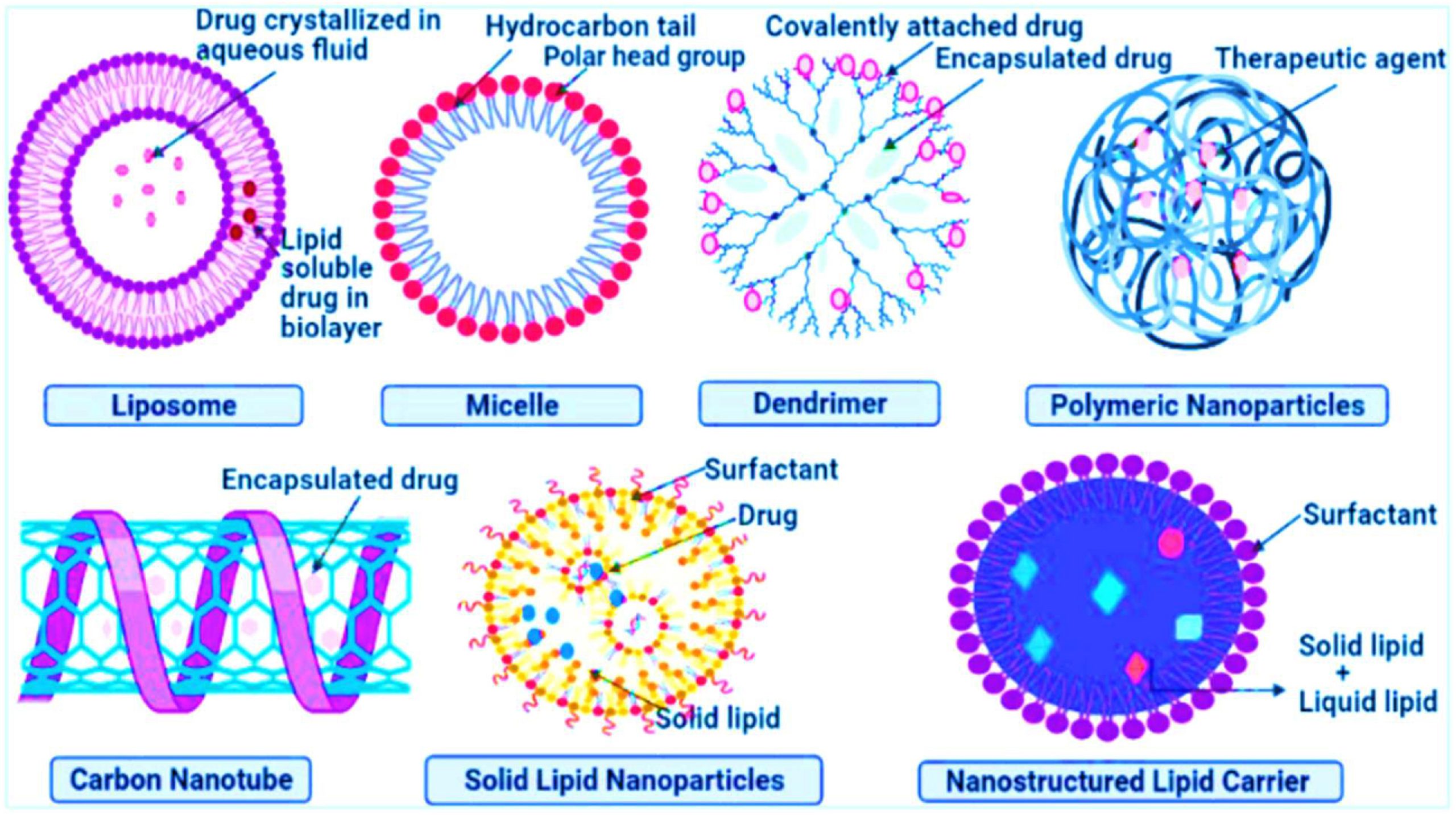Review of the efficacy of nanoparticle-based drug delivery systems for cancer treatment

This review evaluates the literature on nanoparticle-based drug delivery systems for cancer treatment and assesses their efficacy. Nanoparticles have shown potential for improving anticancer agent delivery, reducing systemic toxicity, and enhancing therapeutic outcomes. Extensive studies have shown promising results in preclinical and clinical trials. However, challenges such as limited drug loading capacity, stability issues, and potential side effects need to be addressed to enhance clinical translation.
Highlights
- Nanomedicine has the potential to revolutionise the way we diagnose and treat diseases. The highlights of this review include an overview of the various types of nanoparticles used in drug delivery, such as liposomes, polymeric nanoparticles, and metallic nanoparticles.
- Nanotechnology is widely used in medicine for targeted drug delivery systems, imaging, and diagnostics. The use of nanoparticles in drug delivery has gained significant attention in recent years due to their unique properties and potential applications in cancer treatment.
- Optimising treatment outcomes requires an understanding of how polymer nanoparticle characteristics and drug release kinetics interact. This contribution discusses the effectiveness of polymer-based nano drug delivery systems in targeting cancer cells, comparing different types, and discussing case studies of successful breast cancer treatment.
- Ethical considerations surround the use of nanoparticle-based drug delivery systems, including issues related to safety, access, and affordability. Additionally, the review discusses the advantages and challenges associated with these systems, including improved drug targeting, reduced side effects, and potential toxicity concerns.
- One of the most widely studied types of nanoparticles is liposomes, which are small vesicles composed of lipid bilayers. Liposomes have been extensively investigated for their ability to encapsulate and deliver various therapeutic agents, including chemotherapy drugs, peptides, and nucleic acids.
Researchers are exploring strategies to improve drug loading capacity, such as modifying nanoparticle surfaces or developing novel drug encapsulation techniques. By increasing drug loading, the therapeutic efficacy of these systems can be significantly enhanced. Stability issues also pose a hurdle in clinical translation. To overcome stability issues, researchers are investigating methods to enhance the stability of nanoparticles, such as using protective coatings or optimising the formulation. Additionally, efforts are being made to minimise potential side effects by carefully selecting biocompatible materials for nanoparticle synthesis and conducting rigorous toxicity studies before moving forward with clinical trials.
Table 1. Several types of lipid nanoparticles and the functions they offer.
| Nanoparticles | Lipid | Surfactant | Drug | Method | Disease | References |
|---|---|---|---|---|---|---|
| LNPs. | Waxcetyl palmitate, DMPC. | Polysorbate 60 or 80. | Camptothecin. | Nonsolvent Emulsification. | Glioblastoma. | [31] |
| Mannosylated LNP. | Tristearin, stearyl Amine. | Soya-lecithin. | Doxorubicin. | Solvent injection. | Lung cancer. | [32] |
| Lactoferin-modified LNPs. | Glyceryl monostearate, Stearic acid. | Tween 80, Soy-lecithin. | Docetaxel. | Emulsification and solvent evaporation. | Brain tumour. | [33] |
| Fas ligand antibody conjugated PEGylated LNPs. | Medium chain triglyceriade, Amino-terminated polyethylene glycol monostearate. | Polysorbate 80. | 3-n-Butylphthalide. | Solvent diffusion method. | Brain ischaemic stroke | [34] |
| Apo E-targeting LNPs. | Dynasan 116 | Tween 80. | Donepezil. | Homogenization sonication. | Alzheimer's Disease. | [35] |
| LNPs. | Stearic acid, lecithin. | Myrj 52. | Curcumin. | Emulsion solvent evaporation. | Asthma. | [36] |
| Chitosan-coated LNPs. | Cetyl palmitate. | Tween 80. | Rifampicin. | Micro emulsion. | Tuberculosis. | [37] |
| Transferrinmediated-LNPs. | Hydrogenated soya phosphatidylcholine, DSPE, Cholesterol, Triolein. | Poloxamer 188. | Curcumin. | High-speed homogenization – high pressure Homogenization. | Breast cancer. | [38] |
| pH-responsive LNPs. | Trilaurin, sodium Laurate. | PEG. | Doxorubicin. | Micro emulsion evaporation. | Tumour. | [39] |
| Self-assembled LNPs. | Monoolein. | Pluronic F127 triblock copolymers, Tween 80, 1,2-distearoyl-sn-glycero 3-phosphoethanolamine-PEG Mw¼3400-maleimide. | Paclitaxel. | Solvent evaporation. | Aggressive ovarian cancer. | [40] |
Download the full review as PDF here: Review of the efficacy of nanoparticle-based drug delivery systems for cancer treatment
or read it here
Karthikeyan Elumalai, Sivaneswari Srinivasan, Anandakumar Shanmugam, Review of the efficacy of nanoparticle-based drug delivery systems for cancer treatment, Biomedical Technology, Volume 5, 2024, Pages 109-122, ISSN 2949-723X, https://doi.org/10.1016/j.bmt.2023.09.001.

